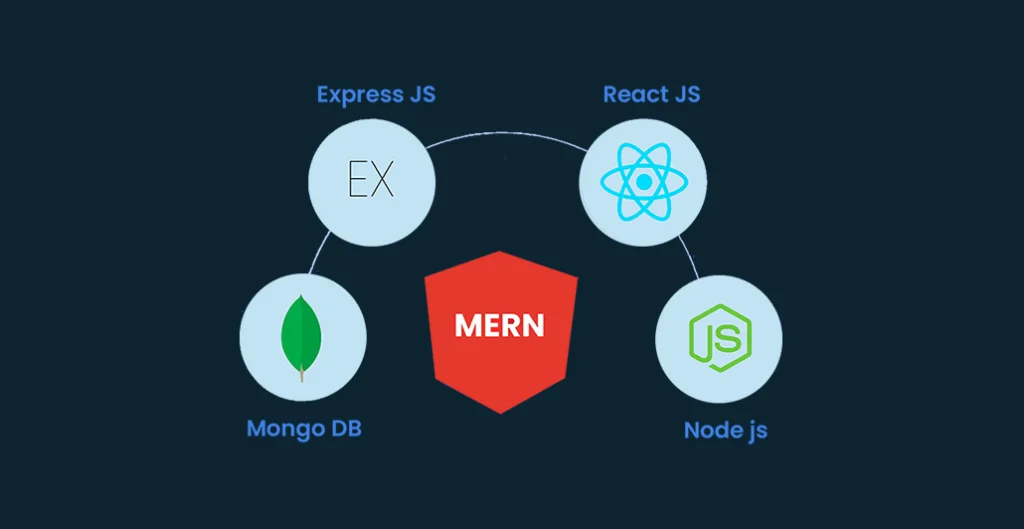Introduction:
In today\’s digital era, web application development has become an integral part of various industries. To meet the increasing demand for robust and efficient web applications, developers are constantly exploring new technologies and frameworks. One such popular and powerful combination is the MERN stack.
The MERN stack comprises four key technologies: MongoDB, Express.js, React.js, and Node.js. This article will delve into each component of the MERN stack, discuss their roles, and provide a comprehensive understanding of MERN stack development.
MongoDB
MongoDB, a NoSQL database, forms the \’M\’ in the MERN stack. It is a document-oriented database that stores data in JSON-like documents, providing flexibility and scalability. MongoDB\’s schema-less nature allows developers to easily modify data structures during the development process, making it highly adaptable. Its powerful querying capabilities and automatic sharding enable efficient data handling for web applications.
Express.js
Express.js is a flexible and lightweight web application framework that operates on the Node.js runtime environment. Serving as the \’E\’ in MERN, it provides a robust set of features to build APIs and handle HTTP requests and responses. Express.js simplifies routing, middleware management, and error handling, making it an ideal choice for building RESTful APIs.
React.js
React.js, the \’R\’ in MERN, is a JavaScript library for building user interfaces. Known for its component-based architecture, React.js allows developers to build reusable UI components, resulting in modular and maintainable code. React.js leverages a virtual DOM (Document Object Model) to efficiently update and render UI components, ensuring optimal performance. With its declarative syntax and rich ecosystem of libraries and tools, React.js empowers developers to create interactive and dynamic web applications.
Node.js
Node.js forms the backbone of the MERN stack, serving as the server-side runtime environment. As an asynchronous event-driven JavaScript runtime, Node.js allows developers to build scalable and high-performance web applications. It enables server-side scripting, file system operations, and network communications, making it an ideal choice for building real-time applications and APIs. Node.js also facilitates seamless communication between the front-end (React.js) and the back-end (Express.js and MongoDB) components of the MERN stack.
MERN Stack Development Process:
The MERN stack development process involves several steps that encompass both the front-end and back-end aspects of building a web application. Here is a detailed overview of the MERN stack development process:
Setting up the Development Environment
To begin, ensure that you have Node.js and MongoDB installed on your machine. Node.js provides the runtime environment for server-side development, while MongoDB is the NoSQL database for storing and retrieving data. Set up a code editor of your choice for development.
Designing the Application Architecture
Before diving into development, it\’s crucial to plan and design the architecture of your application. This involves defining the database schema, determining the API endpoints, and creating a structure for the user interface. Consider the flow of data and interactions between the front-end and back-end components.
Backend Development with Express.js and Node.js
Start by setting up the server-side of your application using Express.js and Node.js. Express.js provides a robust framework for building APIs and handling HTTP requests and responses. Create routes to handle different API endpoints and define corresponding controllers to handle the logic behind these requests. Use middleware for tasks like authentication, error handling, and data validation. Connect to the MongoDB database and implement the necessary CRUD operations (Create, Read, Update, Delete) for data management.
Frontend Development with React.js
With the back-end in place, move on to developing the front-end using React.js. Begin by creating a directory structure for your React components. Design and build the UI elements, views, and forms based on the application\’s requirements. Utilize React\’s component-based architecture to create reusable and modular components. Leverage React libraries and frameworks like React Router, Redux, or Axios to enhance functionality and streamline development. Implement data fetching from the API endpoints created in the back-end using asynchronous requests.
Integration and Testing
Once both the back-end and front-end are developed, it\’s time to integrate them. Establish communication between the front-end React components and the back-end Express.js API endpoints. Test the integration thoroughly to ensure seamless data flow and functionality. Perform unit testing on individual components and integration testing to verify the interaction between different parts of the application. Additionally, consider implementing end-to-end testing to simulate user interactions and validate the overall application behavior.
Deployment and Maintenance
Prepare your application for deployment by optimizing and bundling the code. Use tools like Webpack or Babel to bundle and transpile the code to ensure compatibility across different browsers. Choose a hosting provider or a cloud platform to deploy your application. Popular choices include Heroku, AWS, or Netlify. Set up the necessary configurations, such as environment variables and server configurations.
. Regularly monitor the application\’s performance and address any issues that arise. Maintain the application by keeping dependencies up to date, addressing security vulnerabilities, and implementing new features or enhancements based on user feedback.
Conclusion
The MERN stack provides developers with a powerful and efficient framework for building modern web applications. By leveraging MongoDB, Express.js, React.js, and Node.js, developers can create robust, scalable, and feature-rich applications. The development process involves setting up the development environment, designing the application architecture, developing the back-end and front-end components, integrating and testing the application, and finally deploying and maintaining it. The MERN stack\’s versatility and flexibility make it a popular choice for developers seeking to build dynamic and interactive web applications.

